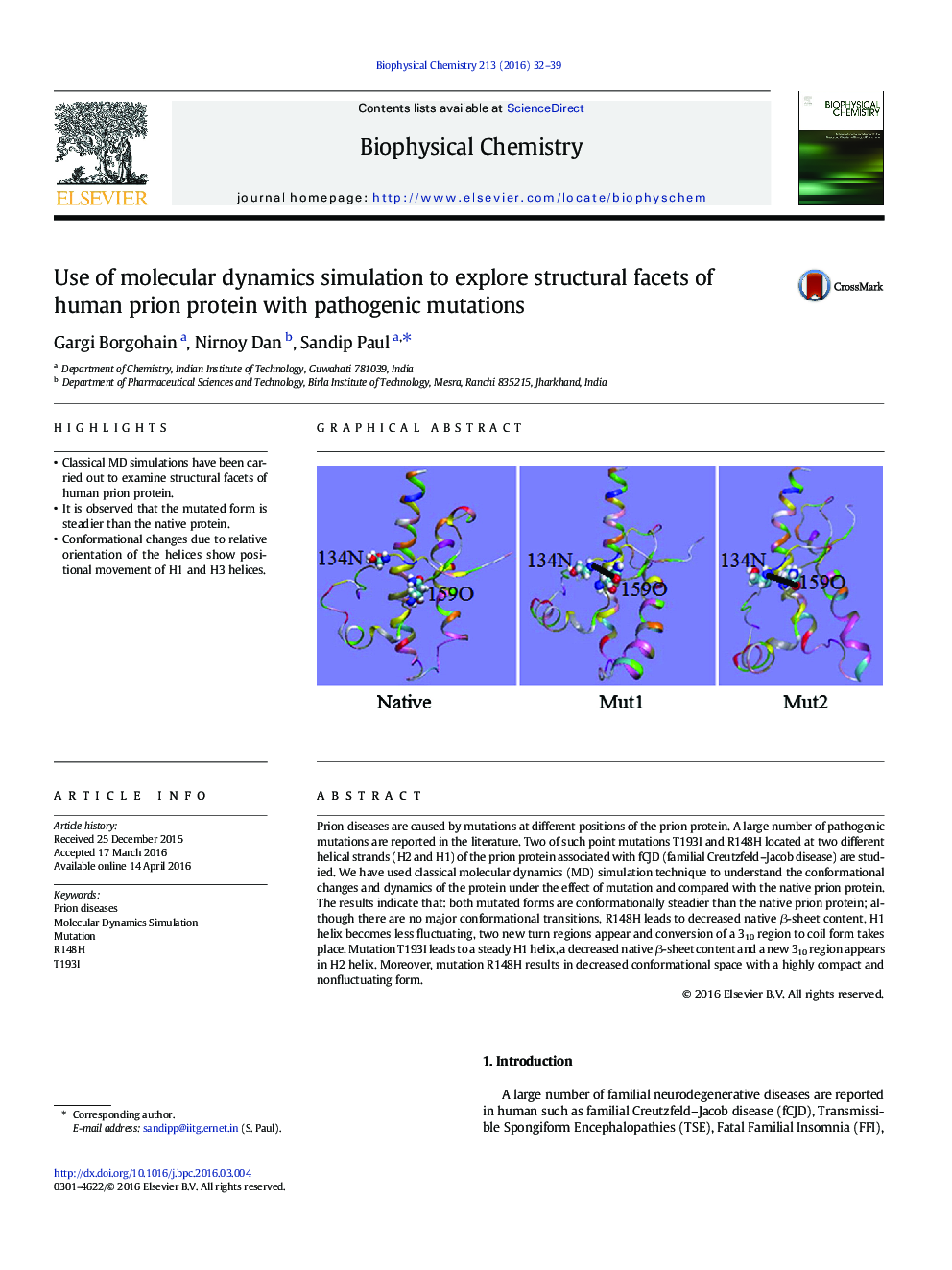| Article ID | Journal | Published Year | Pages | File Type |
|---|---|---|---|---|
| 5370760 | Biophysical Chemistry | 2016 | 8 Pages |
â¢Classical MD simulations have been carried out to examine structural facets of human prion protein.â¢It is observed that the mutated form is steadier than the native protein.â¢Conformational changes due to relative orientation of the helices show positional movement of H1 and H3 helices.
Prion diseases are caused by mutations at different positions of the prion protein. A large number of pathogenic mutations are reported in the literature. Two of such point mutations T193I and R148H located at two different helical strands (H2 and H1) of the prion protein associated with fCJD (familial Creutzfeld-Jacob disease) are studied. We have used classical molecular dynamics (MD) simulation technique to understand the conformational changes and dynamics of the protein under the effect of mutation and compared with the native prion protein. The results indicate that: both mutated forms are conformationally steadier than the native prion protein; although there are no major conformational transitions, R148H leads to decreased native β-sheet content, H1 helix becomes less fluctuating, two new turn regions appear and conversion of a 310 region to coil form takes place. Mutation T193I leads to a steady H1 helix, a decreased native β-sheet content and a new 310 region appears in H2 helix. Moreover, mutation R148H results in decreased conformational space with a highly compact and nonfluctuating form.
Graphical abstractDownload full-size image
